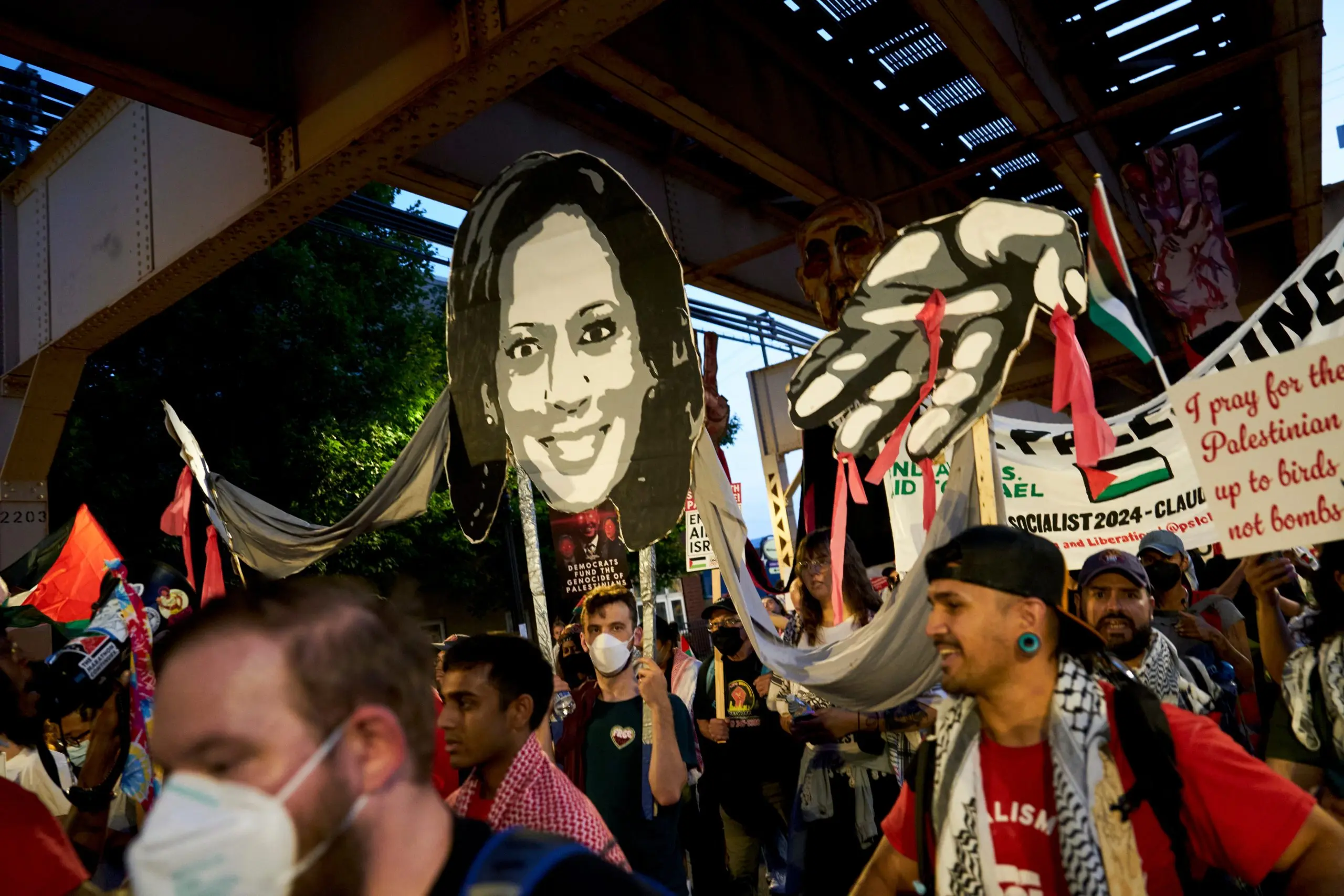President Donald Trump’s weekend dinner with Kanye West and Nick Fuentes — two figures who have become the face of modern-day antisemitism in America — has shocked the political world. For Jews, the dinner was more than simply shocking: It was a reminder of an old and very ugly history of influential Americans mainstreaming antisemitism.
In 1918, industrialist Henry Ford purchased his hometown newspaper, the Dearborn Independent. Ford was a brilliant businessman, the inventor of the Model T and founder of the iconic car company bearing his name. He was also a hardcore antisemite, blaming Jews for everything from World War I to an alleged decline in the quality of candy bars.
Ford turned the Dearborn Independent into a vehicle for promoting his antisemitic obsessions. In 1920, the paper published a series of articles, titled “The International Jew,” on the alleged nefarious activities of Jews in the United States and elsewhere. The series included excerpts from The Protocols of the Elders of Zion, an infamous Russian forgery that purported to be records of the Jewish conspiracy’s worldwide activities.
Because Ford required Ford Motors dealers to distribute the paper, turning it into the second-largest in the United States at the time, his pet conspiracy theories were sent to a massive audience. The impact was enormous; according to historian Norman Cohn, “The International Jew probably did more than any other work to make The Protocols world famous.” Ford’s propaganda set the stage for a wave of American antisemitism in the runup to World War II, including the rise of infamous antisemitic demagogue Father Charles Coughlin.
In 1931, with the Nazis on the brink of taking control of Germany’s government, a Detroit News reporter asked Hitler about Ford. “I regard Henry Ford as my inspiration,” the soon-to-be Führer replied, a framed portrait of the American industrialist over his desk.
Nearly 100 years later, Donald Trump — also an avowed fan of Henry Ford — would sit down with Fuentes, a man who denies that the Holocaust happened. Fuentes’s smirking, “just kidding” demeanor on his America First webcast barely hides his eliminationist antisemitism — and sometimes the mask falls off entirely.
“The Jews had better start being nice to people like us,” Fuentes said in a mid-November broadcast. “Because what comes out of this is going to be a lot uglier and a lot worse for them than anything that’s being said on this show.”
For the past few years, Fuentes has been attempting to insert himself and followers (called “groypers”) into the Republican Party, getting figures like Reps. Marjorie Taylor Greene (R-GA) and Paul Gosar (R-AZ) to attend his America First Political Action conference in February. This weekend was Fuentes’s biggest victory yet, a sit-down with the party’s most important leader — who reportedly came away impressed. “I really like this guy. He gets me,” Trump said of Fuentes, per Axios’s Jonathan Swan and Zachary Basu.
Meanwhile, West has recently emerged as the highest-profile proponent of antisemitic conspiracy theories in the country, a turn that has generated tremendous backlash — at least from most corners of society.
That Trump sat down with West and Fuentes should not be surprising, his own Jewish family notwithstanding. He has regularly deployed antisemitic rhetoric during his time in public life, and become even more willing to directly engage with his more extreme followers since leaving office (by, for example, regularly promoting QAnon content on his Truth Social website). Hosting West and Fuentes at Mar-a-Lago is the logical extension of what he’s been doing since the beginning of his political career.
Leading Republicans are now acting shocked, with some of Trump’s allies in the Jewish conservative world turning on him over the dinner. Whether this round of Republican condemnation will end differently than previous ones remains to be seen. But even if this does mark a turning point in Trump’s political standing, other Republicans can’t unring the antisemitic bell the former president has been banging for years.
What has felt like a very recent spike in antisemitism, with high-profile incidents involving West and basketball player Kyrie Irving, is primarily a continuation of events dating back to 2015 kicked off by Trump’s rise. His political ascendance has had effects similar to Henry Ford’s purchase of the Dearborn Independent, a propaganda victory for antisemites that has helped pull bigotry into the mainstream.
There is, of course, a difference between Ford’s active trafficking of antisemitic propaganda and Trump’s more passive enabling of the same. But the effects of the latter are nonetheless devastating: The last few years have seen an unprecedented spike in antisemitic hate crimes, including the deadliest antisemitic massacre in American history.
“Historians have called the period between World War I and World War II the ‘high tide’ of American antisemitism. I think we may have to rename that: I think we are at the moment living in the high tide of American antisemitism,” says Pamela Nadell, the director of the Jewish studies program at American University.
:no_upscale()/cdn.vox-cdn.com/uploads/chorus_asset/file/24245578/GettyImages_1229647854b.jpg)
To be sure, antisemitism is far less socially acceptable now than it was in the 1930s and even the 1960s. But it also seems much more acceptable today than it was prior to 2015 — and perhaps more lethal than it ever has been in this country.
Trump’s willingness to openly consort with notorious antisemites suggests things may be on the verge of getting worse, not better.
The ebb and flow of American antisemitism
To understand the deeper context behind the recent rise in antisemitism, we need to go back nearly 2,000 years.
Deborah Lipstadt, a historian currently serving as the State Department special envoy to monitor and combat antisemitism, traces the structure of antisemitic ideas back to the very origins of Christianity — specifically, the New Testament description of Jesus’s death.
The early church taught that “the Jews” conspired to kill Jesus — even though Jesus and his apostles were all Jewish and the Romans who actually executed him in the story were not. This, according to Lipstadt, was in part a strategic choice: Christianity had become a competing religion to Judaism, and its leadership wanted to marginalize the older, more deeply rooted tradition. What better way to do that than to blame Jews for killing the literal savior, casting remaining Jews as Christ-denying heirs to a dark conspiracy?
“Jews, [early Christians] argued, repudiated this new faith because of their inherent maliciousness,” Lipstadt writes. “This formulation rendered Judaism more than just a competing religion. It became a source of evil.”
This is the crucial thing to understand about antisemitism: It is both bigotry and an explanatory framework. Jews aren’t just detestable people, in the antisemitic mind; they are the force responsible for all that is bad in the world. After Christianity’s conquest of the Roman Empire and Europe, blaming the Jews for the world’s ills — from war to famine to pandemic — became a persistent feature of the European social environment, morphing with the times to explain whatever plagued the continent at the moment.
When Europeans moved to North America, they brought this way of thinking along with them. While the American state was far more friendly to Jews than its European peers, thanks to a founding emphasis on religious toleration, the prejudice itself still resided in its population — just waiting to be brought to the social fore by contingent events.
This is why historians like Nadell talk about antisemitism as reaching a “high tide.” Antisemitism is always there, but its influence in society ebbs and flows depending on what’s happening in the world. When it hits historical highs, it’s due to a confluence of factors — a perfect storm of Jew hatred.
In the early 1920s, decades of mass immigration, including a surge in Jewish migration, had prompted a nativist backlash. This rising xenophobia, together with a national sense of insecurity created by the post-World War I economic downturn, contributed to a rise in membership for the Ku Klux Klan; by 1925, its cadres claimed between 2 million and 5 million members nationwide. In publishing “The International Jew,” first as articles and then as a widely distributed book, Henry Ford was pushing on an open door.
After World War II and growing public awareness of the Holocaust, antisemitism declined significantly — but it did not go away. In the 1950s, an influx of Jewish admissions to Stanford University led administrators to secretly impose limits on future Jewish acceptance to the school. Between 1957 and 1958, a wave of bombings hit or targeted eight American synagogues — white supremacist terror attacks seemingly designed as retaliation for Jewish participation in the civil rights movement.
:no_upscale()/cdn.vox-cdn.com/uploads/chorus_asset/file/24245617/t.jpg)
These examples illustrate the reactive nature of antisemitism: how events in the world, be they Jewish success or the Black struggle for civil rights, could inflame antisemitic sentiment even at a time when Nazism’s horrors were fresh in American minds.
By the 2010s, the situation was very different.
While explicit discrimination like the Stanford policy was gone, antisemitic groups flourished on the fringes — both the militia-style white power groups and the more genteel intellectual antisemites of the “alt-right.” The rise of the internet, and social media in particular, had given the far right a new ability to network and rapidly disseminate their messages to millions. The kindling for a new antisemitic blaze was there; it just needed a spark.
Enter Donald Trump.
Why antisemitism is rising today
Trump’s explicit employment of fringe-right tropes, calling Mexican immigrants rapists, or giving an antisemitic speech to an audience of Republican Jews, gave these movements a massive boost in influence.
“I think he’s an anti-Semitic enabler,” Lipstadt told me in a 2019 interview. “He’s very careful not to criticize his followers. … He’ll enable anything that’s going to get him elected or get him support.”
Antisemitic hate speech spiked on social media, as did hate crimes in real life. Data from the Anti-Defamation League, a Jewish anti-hate group, regularly showed the highest numbers of recorded antisemitic incidents in nearly 40 years of data. While the ADL’s data is not perfect, primarily due to overly loose definitions, the precipitous and sustained increase since Trump’s entry suggests something really is going on.
:no_upscale()/cdn.vox-cdn.com/uploads/chorus_asset/file/24238898/Screen_Shot_2022_11_29_at_11.56.41_AM.png)
Nearly every year saw some kind of high-profile incident. We saw antisemitic marchers chanting “Jews will not replace us” in the streets of Charlottesville in 2017, and the Tree of Life synagogue shooting in Pittsburgh the following year. In 2019, there was another shooting at a synagogue in Poway, California, and the murder of a New York rabbi at a Hanukkah gathering. In 2021, the Israel-Hamas war in Gaza led to assaults on Jews in the streets of Manhattan and Los Angeles.
Not all of these attacks came from the sort of white nationalists most attracted to Trump. The rabbi’s killer owned literature from the Black Hebrew Israelites, a group that believes Black people are the true Jews and that white Jews are nefarious impostors — a conspiracy theory recently promoted by both Ye and Irving. The attacks during the Israel war in 2021 seemed to originate with supporters of the Palestinian cause.
This tracks with the historical pliability of antisemitism. Because it is an explanatory framework in addition to a form of bigotry — a way that people can blame someone for whatever they’re unhappy about — it can be adapted by nearly any group for any purpose. Henry Ford blamed the Jews for ruining candy bars; Marjorie Taylor Greene blamed California wildfires on a space laser controlled by prominent Jews.
Once the social barriers against antisemitism are broken down, and one type of antisemitism bursts into the open, people from all ideological persuasions can feel more comfortable expressing antisemitic ideas. Antisemitism becomes part of the ambient environment, popping up at seemingly random intervals from different sources. The surge in public antisemitism in the fall of 2022 is really an expression of a broader pattern that we’ve been seeing since 2015.
Which brings us back to the Mar-a-Lago dinner.
There’s something truly bizarre about Ye, a Black man, bringing a white nationalist like Fuentes to the Mar-a-Lago dinner. But once you grasp the nature of antisemitism, it becomes more comprehensible.
For people like Fuentes, it makes sense to publicly support Ye amid his career suicide — despite his Blackness — because he’s helping spread antisemitic ideas to a wider audience. The Goyim Defense League, a white nationalist antisemitic group, hung banners over LA’s 405 highway saying “Kanye is right about the Jews.” Ye, roundly condemned by mainstream America, took the help where he could get it, allying with Fuentes and handing his movement the major coup of a sit-down with their hero Donald Trump.
“A former president sitting for dinner with a white power activist is the kind of thing that activists can use to claim that they have become a real [political] force,” Kathleen Belew, a historian of white nationalism at Northwestern University, told the Washington Post’s Greg Sargent.
Worse, they may actually have a point. Robert Costa, a CBS news reporter and one of Washington’s most plugged-in journalists, wrote that Fuentes represents a kind of subterranean hate ecosystem that has become quietly influential even among mainstream Republicans:
Here’s how it works: Most elected Rs and their advisers closely follow the movements of base voters and track how they gather information. While they prefer to cast that ecosystem as something like a country club message board + Trump rallies, they know it’s anything but that…
— Robert Costa (@costareports) November 26, 2022
For over a decade, since I began tracking it, there has been a rising, online extreme media landscape that now churns daily, but it is often on closed social media groups outside of media glare. It is in these spaces where unvarnished hate about Jewish people, racism is rampant.
— Robert Costa (@costareports) November 26, 2022
Nick Fuentes, while young, has gained major traction in these spaces. He links himself and his followers to core tenets of Trumpism by chanting “America First” and uses monologues in the style of Alex Jones to gain notoriety with a cackling, racist, and grim take on modern U.S.
— Robert Costa (@costareports) November 26, 2022
People in the GOP have noticed. Fuentes is not someone who has slipped under the radar. If you follow the base, you can’t somehow not see it, just like you can’t pretend groups like the Proud Boys and Oath Keepers aren’t gaining ground in these same online spaces, too.
— Robert Costa (@costareports) November 26, 2022
Now that he is out of office, Trump seems even more open about courting this segment of his base. He has recently been promoting QAnon content — a pro-Trump conspiracy theory with some notably antisemitic components.
While Trump has claimed not to know who Fuentes was and that any expression of antisemitism ”wouldn’t have been accepted” at their dinner, he has not issued a full-fledged disavowal of Fuentes and the forces he represents — and Trump’s track record suggests that one isn’t forthcoming. There’s every chance that his 2024 presidential run will be even more extreme than what we saw from him in 2016 and 2020.
How much worse could things get? Nadell, the American University historian, puts it this way: Trump is an even more influential and popular figure than Henry Ford was in his heyday.
Ford “was greatly admired, but he was not the past president,” says Nadell. “The American people didn’t put Ford at the head of the Ford Motor Company. But the American people put Trump at the head of the United States.”
Correction, 9:15 am ET: Due to an editing error, a previous version of this article misstated the viewpoint of the Black Hebrew Israelites.






















Discussion about this post